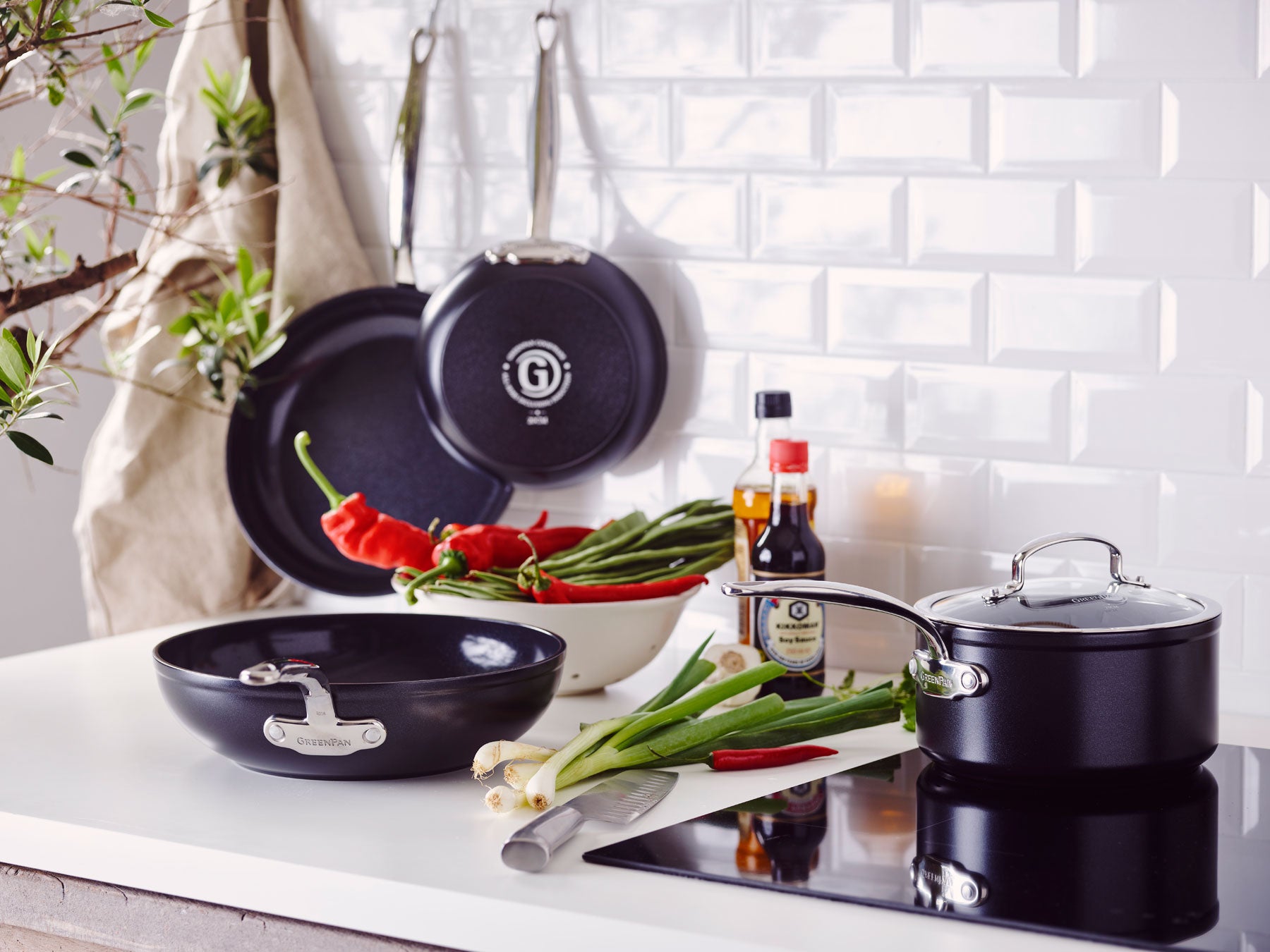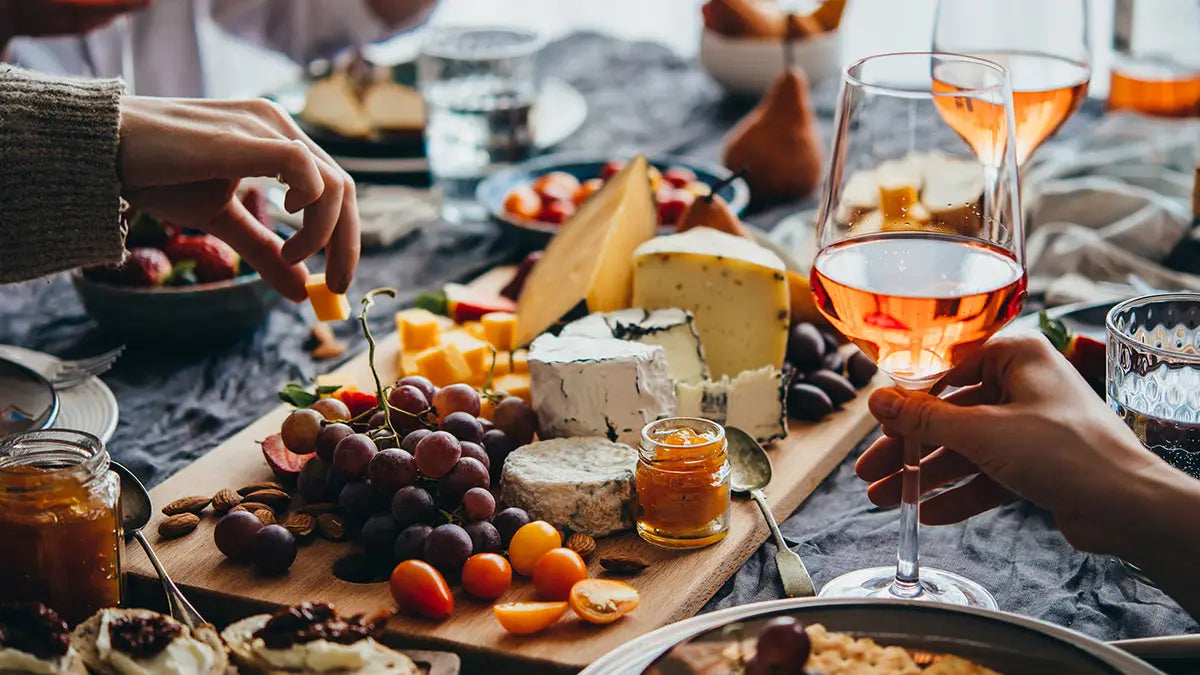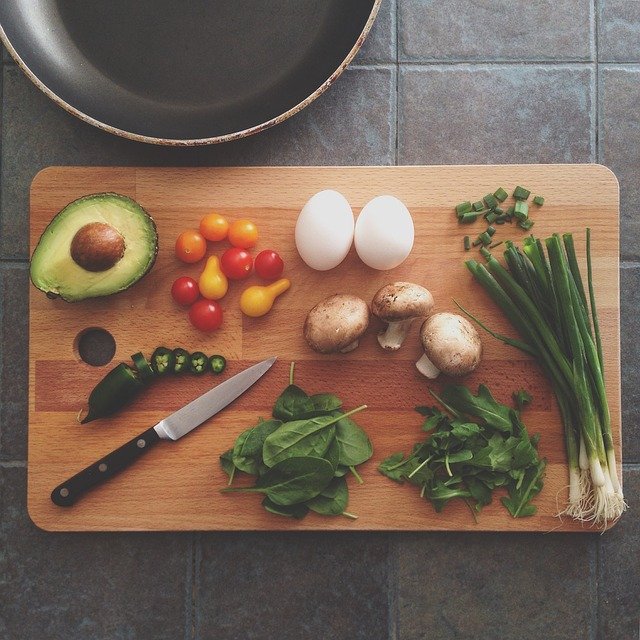
Best Non-Stick Frying Pan Care & Use Guide
How to make your frying pan last 2 to 10 times longer!

Andrew Bluett-Duncan
Director
Home › Blog › Buying Guides › Best Non-Stick Frying Pan Care & Use Guide
Simply put Non-Stick Frying Pans are made of two components. The Metal Body and the Non-stick Coating. So in this report we'll look at what the body is made from, its thickness and the type of non-sticks that cover the pan, with aim of showing you how to avoid doing things to them that shorten their life.
There are six main reasons why a frying pan may last so little time … the good news is that most of them you have control over. They are:
- Quality of non-stick
- Material and thickness
- How much heat is used
- Type of utensils used
- Type of food cooked
- The way you clean it
Now I'll take these points in order and show you how you can avoid the pitfalls that so many of us fall into.
Non-Stick Coatings
Funnily enough you might think this is the single most important aspect of a non-stick pan, but this is not the case (the metal body of the pan and its thickness have a much bigger part to play in its ease of use and length of life). But I've put the non-stick coating first here because I think it will help you make better sense of the other points later on.
Non-stick coatings for cookware are typically PTFE based plastic. Differing companies produce variants of it, which have reasonable, to quite outlandish claims made for them. When all is said and done, however, they are all heat proof plastic. The best ones will take up to about 270°C before overheating, and if you go above 350°C just the once then you will destroy the coating pretty well instantaneously with the structure of the plastic breaking down and that is the end of the pan! As we'll see later cooking should never get to these sorts of temperatures but for a number of reasons it does, so read on. The better frying pans also have some quite sophisticated substrates that reinforce the non-stick which either involve a Stainless Steel mesh or Titanium coating. Both these systems certainly prolong the life of the pan in terms of protection from mechanical damage such as cutting it with a knife, but neither can (nor were they designed to) protect it from overheating.
Overheating is the big destroyer of non-sticks. Bigger by far than mechanical damage inflicted by fish slices et etc. So returning to temperature and influence that the material your Frying pan is made from effects both its cooking qualities and the non-stick coating, a good pan has to have the following characteristics; it needs two things:
- A certain minimum mass (i.e. thickness of metal)
- Ability of the metal to transmit heat fast around the pan (e.g. Copper or Aluminium both fast conductors of heat)
So in summary non-stick coatings have two significant weaknesses. Firstly sensitivity to heat and secondly the relative easy to mechanically damage than with knives, forks, spatulas etc. So let's now look at the metals and their thicknesses.
Le Creuset Toughened Non-Stick
Explore collection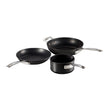
Le Creuset 3-ply Stainless Steel
Explore collection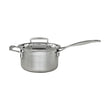
Demeyere Frying Pans
Explore collection
Material and thickness and how much heat is used
Heat source
We'll take the heat issue first. Material and thickness used is a key factor because the frying pans (and the bigger they are the more important this becomes), must spread the heat over a large area and they must do it evenly. Now here's the thing, different metals conduct heat at hugely different speeds, so choosing the right metal and thickness of metal is a key in how your frying pan is going to perform. An exaggerated example would be to imagine a very large frying pan being heated in the centre by a single gas flame say something like a blow torch. The pan will get very hot in the middle but will be stone cold out near the edge. Even if the heat did get there eventually there would always be a huge difference between the centre of the pan and the outer edge.
Now in reality it's not as extreme as my example but if you choose a metal which transmits heat very fast then you stand less chance of creating that hot spot in the centre of the pan which makes good cooking almost impossible and incidentally can burn off the non-stick coating. So for example, with a top quality pan instead of your omelette being burnt in the middle and underdone on the edge, you will have a beautifully, evenly cooked omelette, preferably still runny on the top, utterly delicious and just begging to be eaten!! (There is also a benefit to the Non-Stick coating which we'll come to in more detail later on.) It is essential that you appreciate this point; particularly if you are going to buy a new pan at some point in the future (could be a little late for you if you've just bought a rather thin or very light weight one but continue reading as what I'm going to be showing you still applies even in this case and will make a difference to even the lightest of pans). So let's look at the materials one by one to see which is best for you.
Copper
Some materials are very much better at spreading heat than others. At the top of the scale is copper which is a very good conductor but it is also very expensive (for it to be effective it needs to be 2mm thick or more) but because of this nobody puts non-stick on Copper at the moment. As an aside, there's another interesting factor here. People who buy copper tend to be pretty good cooks who know the right temperature to use for a particular job. And here's an interesting thing for Non-Stick Frying Pan if you know the correct temperature for say cooking crepes then you don't really need non-stick at all! But of course it takes time and patience and money to get to this stage and for many of us the time factor in particular is something we're short of.
So… back to non stick Non-Stick on Aluminium
Almost as good as copper is aluminium, which is a great material from which to make pans. It is relatively economical and spreads heat evenly and quickly. A good aluminium pan needs to be a minimum of 3mm thick and the absolute best are 5mm or thicker and are made from virgin aluminium. Anything thinner and the pan will get too hot in the middle, resulting in an overcooked burnt food in the centre of the pan. Result, overdone rubbery omelette! (This principle of metal thickness and heat spread efficiency applies to all metals and when you finish reading this you will be able to decide for yourself which one fits your requirement and budget).
Non-stick on steel
Another popular material is steel. This has one benefit and two drawbacks. The benefit is that steel is cheap and even the heavy gauge ones we sell are still very economic. However, the two problems are, firstly, steel spreads heat relatively slowly, so don't be in too much of a hurry when using it. If you crank up the heat straightaway in your rush to brown your meat you'll get an almighty hot spot in the centre (burnt foot again!).
Secondly, if your pan achieves anything over 350° C, and very often less, you will overheat the non stick to the point of no return (it starts peeling off shortly afterwards) This is a very important point and one that I can't stress enough.
A brief digression - for a variety of reasons the majority of manufacturers are reluctant to tell you to not use too much heat. Cynically you may think they do that to sell more pans. But you know, all the manufacturers that I've met (which are all the ones we deal with and a good number besides) are enthusiasts about their products and they are not in business for a fast buck and do want repeat business. So why this reluctance to warn about heat levels? Well the thing is it's very very difficult to be precise about heat in a frying pan. Why? Well when water's boiling you can see it and hear it. When fat is at the correct temperature for cooking (170-230C) it doesn't look very different to the same fat at 350° C (although if you look carefully the oil does become even more fluid at very high temperatures and at 350° C it will start smoking which means that you have broken down it's structure and you should throw it away and restart with fresh oil).
At this temperature as I mentioned previously you will destroy your non-stick coating as well, however much you paid for it. So this problem of overheating is a difficult one. Some years ago I remember Le Creuset used to stamp the bottoms of their frying pans with the words “do not overheat”…but we all have very different ideas of what this means. And to make life more complicated still, an empty pan is going to overheat many times faster than a pan with oil or food in it. This is because, when empty, the heat has nowhere to go and builds up and up; on the other hand when there's food present in it, the heat is absorbed into this and so the build up is much much slower.
One man's meat is another man's poison and so it is with the amount of heat people use when cooking. Most of us use too much heat and some far too much heat. Very very few of us use appropriate amount.
So we come back to the hapless manufacturer and his dilemma. How does he tell his customers not to abuse his pans, without making them sound like an inferior product to the next manufacturer who doesn't say his non-stick has a heat limit (1). Well the jury is still out on that one and shows no signs of getting even close to a verdict. Meanwhile take my word for it , don't use excessive heat and follow what I recommend and one thing I can guarantee is that your frying pans will last longer! Talking of guarantees, remember our guarantee which is designed for situations such as this, enabling you buy a first replacement at half price what ever the reason for the accident( sorry but you do have to have bought it from us in the first place). So bearing all this in mind let's get back to non-stick frying pans and the materials they are made from.
Non-stick on cast iron
Now, cast iron is an interesting material, but one that is not clearly understood by many leaving some people with ambivalent feelings about it. Most of us associate it with one or two big names in cookware, most famous of which is "Le Creuset", although "Chasseur" has made some inroads in recent years. Cast iron is a wonderful cooking material to use if you understand it. If you don't, and we often hear people say that they don't like it because it burns, then you may well end up hating it. Certainly if you burn something in cast iron then you have not understood its great qualities and are in effect abusing it (this point is particularly important when it comes to the sensitive combination of non-stick coatings on cast-iron.) So bear it in mind as you continue to read, that my comments are directed at cast iron with a non-stick coating as there are some major differences between the ways I recommend you treat this combination and that of the more usual enameled cast iron which constitutes the majority of Le Creuset and Chasseur ranges and is rather happier combination of materials (but that is for another day).
Now here's the thing, Cast iron is actually a poor conductor of heat, so what I said to you previously about steel is also true for cast iron. However, if used correctly and with patience, then it compares with the best. Why?
Cast iron absorbs heat slowly but spreads it evenly and stores it for a long time, (which can be a great quality; we'll look at this tremendous benefit in other applications another time) so use it carefully and without hurry or excessive heat. With non-stick on Cast iron always put either oil or food into the pan shortly after putting it on the heat as this will dramatically reduce any chance of you burning the non stick off. This is not a pan to seal meat at a high temperature. It is a general purpose pan that when allowed to reach working temperature all over, works and works well and will last many years. But I repeat, do not use a non-stick cast iron pan for high temperature work or if you are in a hurry.
Non-stick on stainless steel
This brings me to the last category of metals, stainless steel. A material generally acknowledged to have some great qualities, such as looks and it is easy to clean and very tough. However, as a heat transmitter it is very poor so nearly all manufacturers add an aluminium sandwich base to it so that the aluminium transmits the heat across the bottom and you don't get hot spots (remember that hot spots lead to burnt food and burnt non-stick as well). Now the quality and thickness of the materials is, as always, important here. So a £25 frying pan is not going to give the same control over the cooking process as a £125.
Heat spots
But one significant improvement made many years ago by a firm called Demeyere is the multi-ply material that they pioneered. With these types (now copied by a number of manufacturers) not only does the base have a Stainless Steel Aluminium Stainless Steel sandwich bottom, but this lamination also goes up the sides of the pan as well. This does two things. It spreads heat up the sides without hot spots and it saves the non-stick from getting overheated around the outside bottom edge as it tends to do with the more conventional sandwich base. This multi-ply is more expensive but may well be a better bet for you.
So to summarise the metals...
Copper is superb but no one does it with a non-stick coating. Aluminium is a close second and my personal favourite for general purpose non-stick pans (and this immediately tells you something about my level of cooking!). Steel and Cast Iron require caution in their use if you are not going to damage them, but if used carefully they are respectively “ok” and “good”. And lastly high quality stainless pans with a good aluminium sandwich base are the best but come at a price!

Utensils
Another lesson is don't use metal utensils in your non-stick pan. Whatever the manufacture may say and claim. Remember that all that is between you and the metal of the pan are a few microns of plastic. It may be reinforced with high tech names and may even have titanium in it, but to my knowledge, they are still vulnerable to metal and even hard plastics like melamine utensils. So stick to either the softer nylon or wooden utensils and your pans will last much, much longer.
Heat In two words most of us use “too much”. We are impatient, we are hungry, we are in a hurry and we are led by all those TV chefs using big flames for show (they get away with it because they're experts and know what they're doing, but in any case they don't pay for their pans!) As I said earlier non-stick is only heat proof up to a point. The best ones don't go much beyond 280°C, GreenPan now goes 450°C, after which they are no longer that lovely slippery dark grey magic surface. Instead food starts to catch/burn on it and when you try to clean it you remove the non-stick along with burnt on food. End of story and end of the pan. So the moral here is use less heat and your frying pan will repay you handsomely with a long life (always assuming it's a reasonable quality in the first place). As an experiment try turning down the heat that you'd normally use by 25% or 30 % and see what difference it makes. I think you'll find your cooking improves, your gas and electricity bill drop a bit and your pans last longer.
Type of food
Oddly enough, even the type of food you are cooking makes a difference to the performance of the non-stick. With a good non-stick it is easy to cook an omelette without butter (why you should want to do so is questionable other than diet!), but eggs that normally stick to everything in sight will just slop off a non-stick surface. Bacon on the other hand, with its high salt content, is quite likely to stick like nobodies business to even the best non-sticks. So don't think that non-stick is proof against every form of food sticking, although it will be against most types.
Cleaning
For aluminium pans shove them into hot soapy water straight from the cooker and use either a nylon brush or a Lady Jane scourer (they are specially made for non sticks coatings and are very effective). This treatment is ok for Stainless Steel and Steel pans as well. However NEVER put a hot enameled cast iron pan (like Le Creuset) into the sink until it has cooled down. The reason is that “thermal shock” can pop the enamel off.
Finally below, I've talked about some of the traps that may occur ironically with the more expensive high quality non sticks. With a number of the better quality non sticks available, as the pan ages (a good quality non-stick pan can last many years) it may gradually build up a film of carbon on the surface, which starts typically on the sides of the pan and gradually spreads down and across the working surface. This will be a problem to you because as the non-stick surface is covered it prevents the non stick from doing its job! Now the reason this happens is largely because many of us use too much heat (so burning fat on to the surface that is both difficult to see and to remove). But we also have lodged somewhere in the back of our minds that you only wipe a frying pan clean with kitchen towel (or newspaper as my parents did!). Well that is correct procedure for good old fashioned cast iron or black steel pans. But for non-stick they must be washed thoroughly in hot soapy water.
Ignore this advice at your peril. Because it is actually quite difficult to remove the carbonized grease of ages from the non-stick surface, without removing the non-stick as well. (If you've already got this problem email or ring me and I may be able to help, depending on the make and how long it's been like that!) Well this is the end of my report on Non-Stick Frying Pans. If you take the advice that I've laid out here you will certainly make your pans last longer, you will use less Gas or Electricity and in many cases your food be more succulent and tastier as a result making you an even better cook than you already are.
Appendices
Part 1
Now since I first wrote this report one thing has recently changed. There’s been a totally new development in non-stick coating. A company called “GreenPan” has developed a coating which is based on silica or sand. This coating has one huge and immediate advantage to you the user. It’s practically impossible to overheat it. Officially it will take temperatures up to 450°C which is 180°C higher than plastic based non-stick.
For those of you concerned about the health issues around PFOA and agree with the stance taken by the American Environmental Agency then you can be reassured that neither of these substances are in the GreenPan product. And lastly the name suggests they are made in as “Green” a way as possible, with significant quantities of recycled metal (different percentages for different ranges) being used in their manufacture. The coating itself uses 60% less power than plastic based non-sticks so they have a smaller carbon footprint and even the packaging is recycled paper and card. On the subject of PFOA, this material has now been banned from use in plastic based non-stick coatings as well.
We’ve been using them at home now for years and they perform very well indeed and are easy to wash up. The only problem I find is that fried eggs tend to stick a bit. Personally I find that’s not a bad trade off, but if fried eggs are your thing and nothing else then maybe stick with what you know.
Part 2
Since writing this, 8 years ago, there has been some controversy over GreenPan and its non-stick properties, with a number of people complaining that it sticks badly after some months use. In my experience this always down to one thing and not usually a problem with the pan itself.
We have had a number of pans returned with a similar complaint and have either replaced or refunded the unhappy customers.. There is however, a good reason for this happening which I covered in the previous page under the “cleaning” section.
Modern non-sticks cannot be treated like the old iron pans. They need washing up just like any other pan. If you keep a non-stick pan clean it will last longer and the non-stick will continue to work which it can’t do if there is carbonised grease on the surface.




















